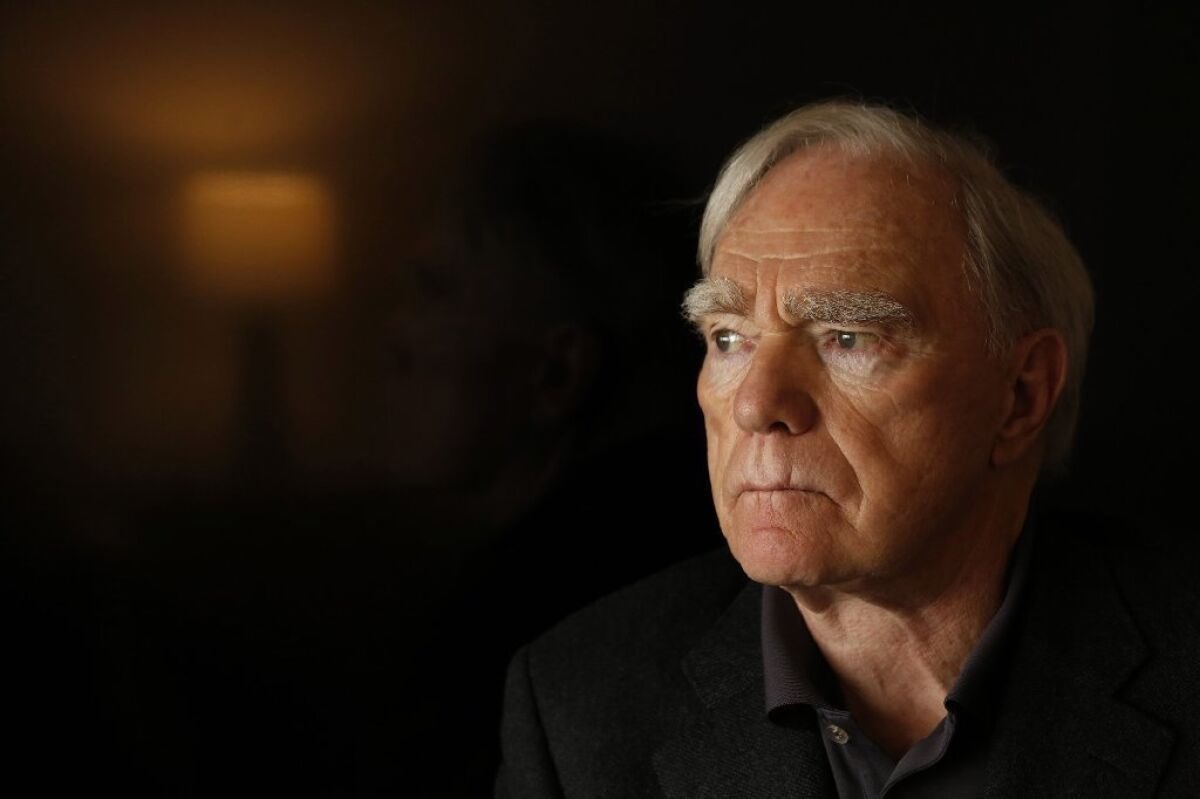Thread
Robert McKee re-designed the marketing of:
• Nike
• HP
• Microsoft
To be centered around stories.
In 2013, he laid out his step-by-step process to create powerful brand narratives.
Here’s a breakdown:
• Nike
• HP
• Microsoft
To be centered around stories.
In 2013, he laid out his step-by-step process to create powerful brand narratives.
Here’s a breakdown:
McKee has published two books:
• Story
• Storynomics
Both are incredible.
Story focuses on the art of screenwriting while Storynomics goes deep on story-centric brand building.
He also posts gold on his YouTube channel: www.youtube.com/c/RobertMcKeeSTORY/videos
• Story
• Storynomics
Both are incredible.
Story focuses on the art of screenwriting while Storynomics goes deep on story-centric brand building.
He also posts gold on his YouTube channel: www.youtube.com/c/RobertMcKeeSTORY/videos
“The arc of the purpose-told story guides the consumer from an absence in her life to its fulfillment, from need to satisfaction.”
McKee lays out his 8 stages for great business storytelling.
He calls the framework ‘The Purpose-Told Story:’
McKee lays out his 8 stages for great business storytelling.
He calls the framework ‘The Purpose-Told Story:’
1. The 3 Targets
Before considering your story, you must understand your:
• Target audience – who you’re talking to
• Target need – what problem they have your product solves
• Target action – what you want them to do
Without defining those three, you’re guessing.
Before considering your story, you must understand your:
• Target audience – who you’re talking to
• Target need – what problem they have your product solves
• Target action – what you want them to do
Without defining those three, you’re guessing.
2. Subject Matter
The constraints and subjects that make up your story.
McKee breaks it into 3 components:
• Core value – the value your brand couldn’t exist without
• Protagonist – the Hero your audience empathizes with
• Setting – society, time, and place
The constraints and subjects that make up your story.
McKee breaks it into 3 components:
• Core value – the value your brand couldn’t exist without
• Protagonist – the Hero your audience empathizes with
• Setting – society, time, and place
3. The Inciting Incident
Launch the story by throwing the protagonist’s life out of whack.
Your goal is two-fold:
• Grab your audience’s attention
• Propel the protagonist to action
McKee says, “fine storytellers seek out the negative side of life.”
Launch the story by throwing the protagonist’s life out of whack.
Your goal is two-fold:
• Grab your audience’s attention
• Propel the protagonist to action
McKee says, “fine storytellers seek out the negative side of life.”
4. The Object of Desire
An unfulfilled need the protagonist feels they need to get their life back on track
That happens to be fulfilled by your product / service.
McKee says the most compelling objects come with the highest price tags.
An unfulfilled need the protagonist feels they need to get their life back on track
That happens to be fulfilled by your product / service.
McKee says the most compelling objects come with the highest price tags.
5. First Action
The tactical choice the protagonist makes to re-balance their life.
This cannot succeed. That’d be too easy.
Introduce antagonists – anything keeping the protagonist from the object of desire.
The tactical choice the protagonist makes to re-balance their life.
This cannot succeed. That’d be too easy.
Introduce antagonists – anything keeping the protagonist from the object of desire.
6. The First Reaction
The reaction to the First Action should be different or more powerful than expected.
This gap in expectation vs. reality leaves space for the protagonist to gain insight.
Two key aspects:
• Violation of expectations
• Turning points
The reaction to the First Action should be different or more powerful than expected.
This gap in expectation vs. reality leaves space for the protagonist to gain insight.
Two key aspects:
• Violation of expectations
• Turning points
7. Crisis Choice
The moment of truth – this final action must be more risky than the first.
It’s now or never.
The protagonist will either re-balance their life or remain in chaos.
The moment of truth – this final action must be more risky than the first.
It’s now or never.
The protagonist will either re-balance their life or remain in chaos.
8. Climactic Reaction
The protagonist gets their life back on track.
Neuroscientists find the brain’s response to a good story’s climax is a few seconds of heightened memory.
McKee recommends putting your logo right after the climax to take advantage of this.
The protagonist gets their life back on track.
Neuroscientists find the brain’s response to a good story’s climax is a few seconds of heightened memory.
McKee recommends putting your logo right after the climax to take advantage of this.
The brilliant part of McKee’s process?
It’s built outside in.
He starts with the end – your audience, their problem, and the desired action.
Then he figures out the beginning – the event to trigger the story.
Last, you build the narrative arc to connect beginning and end.
It’s built outside in.
He starts with the end – your audience, their problem, and the desired action.
Then he figures out the beginning – the event to trigger the story.
Last, you build the narrative arc to connect beginning and end.
I write about storytelling and creativity 1-2x per week.
Follow @nathanbaugh27 so you don’t miss those.
Here’s how Apple used a narrative to 10x its ad network (and crush FB):
Follow @nathanbaugh27 so you don’t miss those.
Here’s how Apple used a narrative to 10x its ad network (and crush FB):
If you want to become a better storyteller, try my free newsletter with 36,179 others.
1 storytelling tip each Saturday morning: www.worldbuilders.ai/subscribe
1 storytelling tip each Saturday morning: www.worldbuilders.ai/subscribe
